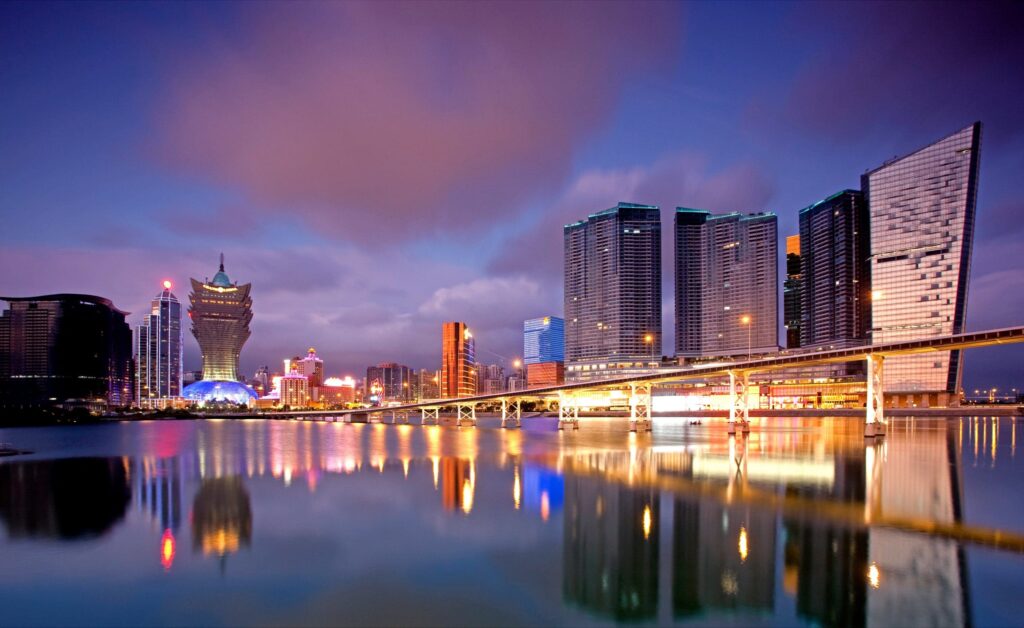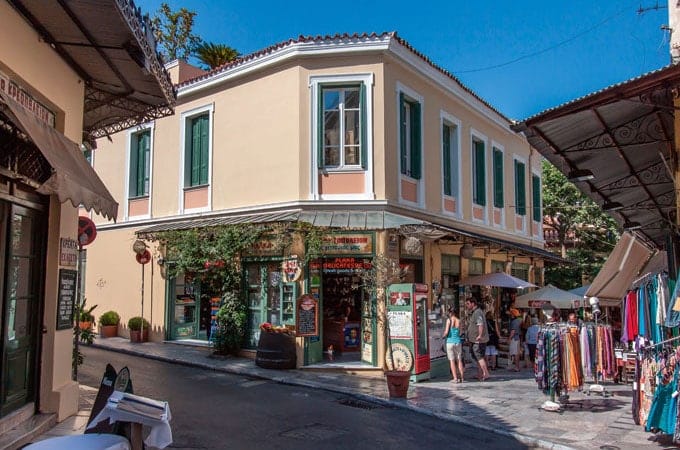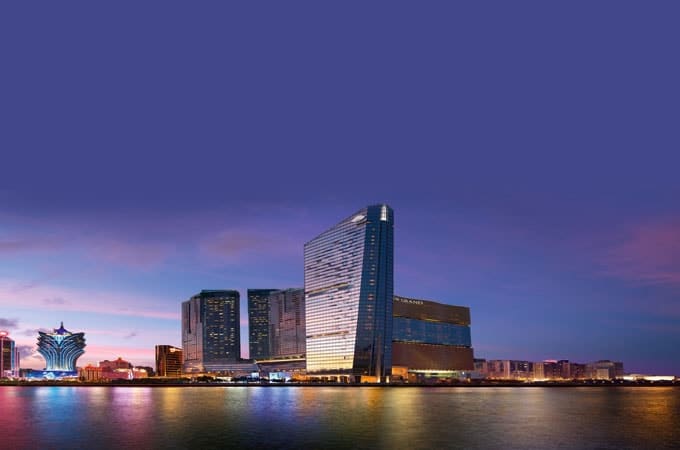Macao is a compact city made for walking and with over 20 unique historical or religious sites clustered around the city’s heart, it’s easy to navigate your way around, savouring the wonderful sights in a short space of time. Here are eight don’t miss attractions.
I lived in Macao for nearly three years. These are the eight sights I’d take friends and family too if they were only in town for a short while. I However, if you have more time to spare, make sure to also explore the luxurious five-star hotels and indulge in the incredible dining experiences that Macao has to offer. For more ideas and recommendations, check out our 72 Hours in Macao story.
Senado Square
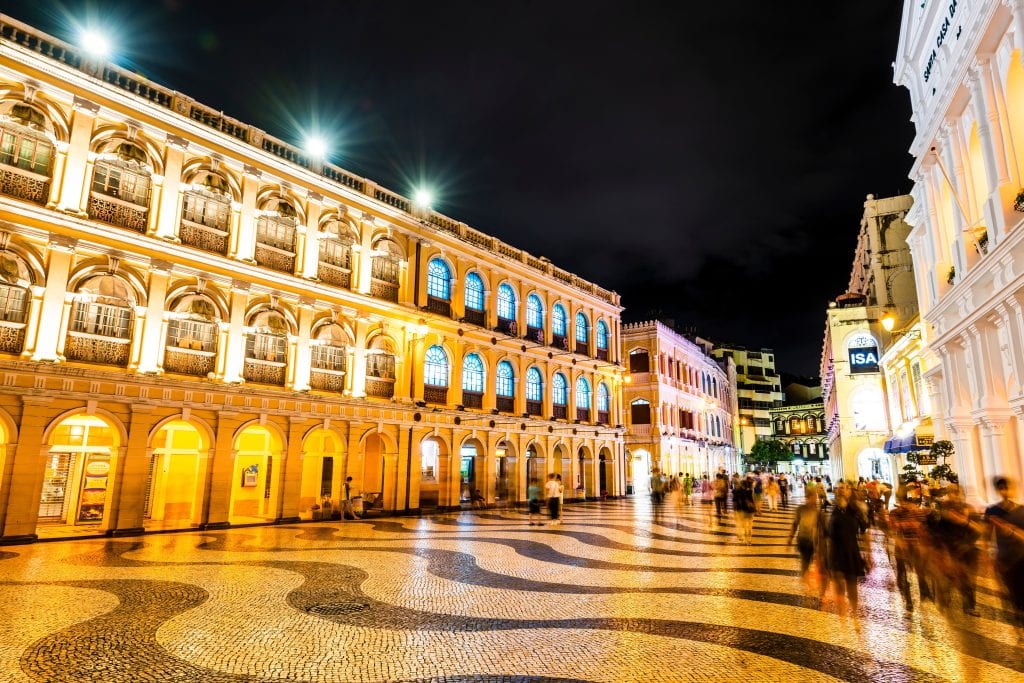
Senado Square, located in the central area of the Macao peninsula, is a historic and vibrant town square that showcases the architectural beauty of the territory. With its wave-patterned, stone mosaic streets and neo-classical, pastel-colored buildings, Senado Square is a popular attraction for both locals and visitors. The square has been a civic center for centuries and is surrounded by boutiques, stores, and traditional Chinese restaurants. It is also part of the UNESCO Historic Centre of Macao World Heritage Site. In addition to its stunning architecture, Senado Square is known for hosting cultural events such as lion and dragon dances during special occasions like the Chinese Spring Festival. The square is connected to other significant sites in Macao, including the Ruins of St. Paul, Rua dos Mercadores, and the Portuguese Consulate. Over the years, Senado Square has undergone various transformations, with the most notable change being the implementation of a no-cars policy in the 1990s, making it a pedestrian-only area.
Visit the Ruins of St. Paul’s.
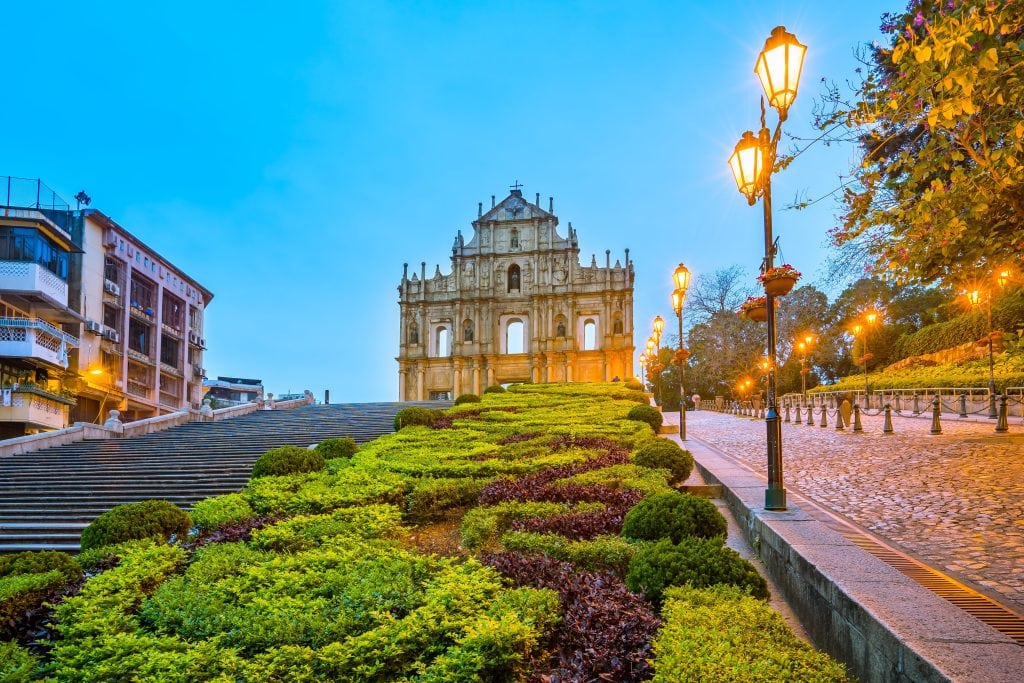
Macao’s most iconic landmark, the Ruins of St Paul’s, is sited at the top of a grand staircase not far from St Dominic’s church. Even though it is just the facade of what was originally the Church of Mater Dei built by the Jesuits in the early 17th century and destroyed by fire in 1835, it’s a stunning reminder of Europe’s past influence in China. Take a walk up the steps and explore the intricate carvings and statues that adorn the facade.The Ruins of St. Paul’s is not only a historical site but also a symbol of Macao’s rich cultural heritage. The intricate carvings of Christian and Chinese characters adorning the facade are clearly visible and quite mesmerising when seen through the magnified lens of a camera.
St Dominics Church
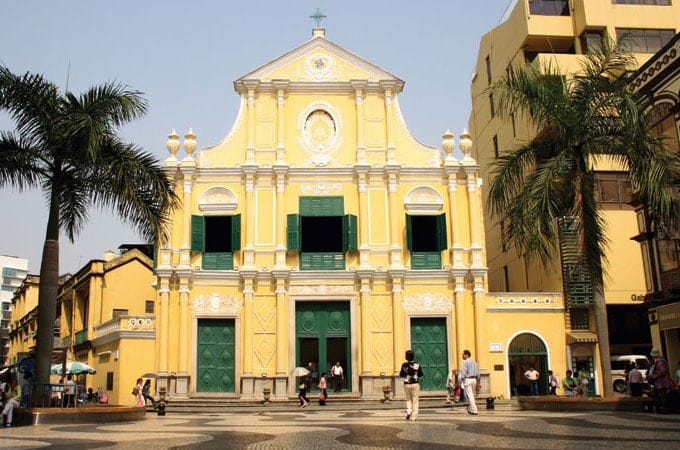
Founded in 1587 by three Spanish Dominican priests, St Dominic’s church, sited at the end of Senado Square, is hard to miss with its magnificent yellow Baroque exterior. Be prepared to spend a pleasurable 20 minutes or so exploring its exquisite interior and treasury museum of around 300 artefacts. It’s free to enter so take advantage of this cool respite to drink in the serene atmosphere of this church which is such an important part of Macao’s history.
Mont Fortress
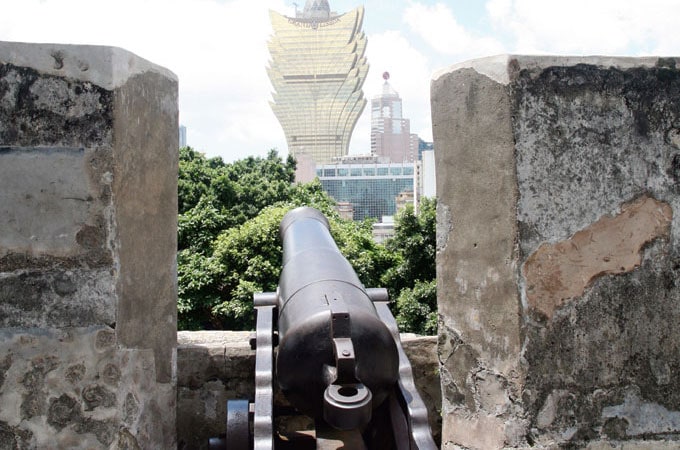
Keep walking up the hill and you will come to another interesting historical site – Mont Fortress. Built in the 17th century by the Jesuits as the city’s principal defensive structure, the multiple cannons placed around the ramparts on the thick stone walls are truly magnificent in their old-world military glory. It doesn’t take much imagination to picture what it must have been like all those centuries ago when the Dutch invaded Macau to plunder its vast wealth – and they would have succeeded but for a cannon ball fired from the fort which fortuitously found its way to the Dutch munitions dump, blowing it sky high – the only time the cannons have been fired!
Macao Museum
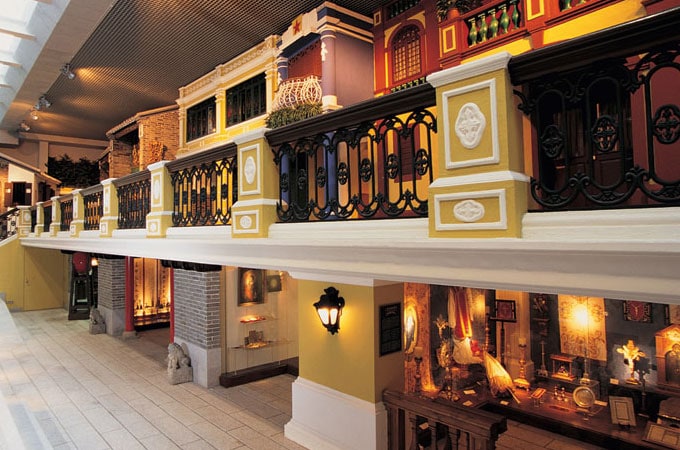
Under the fort is the Macao Museum, an engrossing place to spend an hour visually tracing Macau’s history – its traditions, culture and customs. Spread over three storeys, the museum manages to run the timeline of history with intrigue and passion, putting past and modern-day Macau firmly into perspective.
Taipa Village.
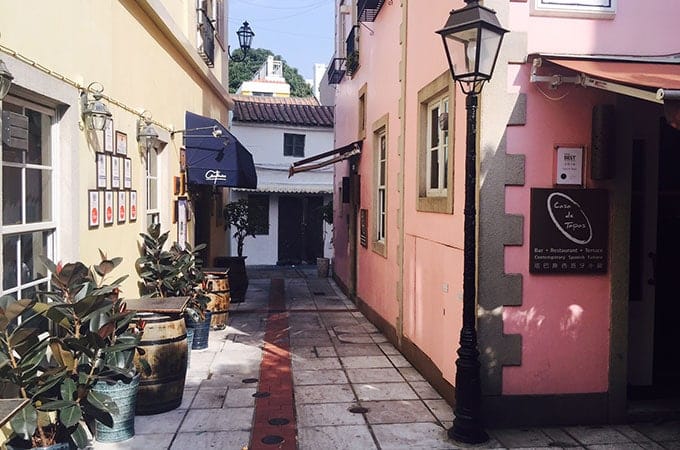
If you’re looking to immerse yourself in Macau’s rich history and culture, a visit to Taipa Village is a must. This charming neighbourhood is filled with traditional Chinese and Portuguese architecture, giving you a glimpse into the city’s colonial past. Take a leisurely stroll through the narrow streets and discover hidden gems like temples, museums, and art galleries. Stop by the famous Taipa Houses-Museum, a collection of five beautifully preserved colonial houses that showcase Macau’s architectural heritage. As you explore Taipa Village, indulge in some of the local cuisines – from traditional Chinese dim sum to Portuguese egg tarts and famous Portuguese restaurants such as Antonio’s, there are plenty of delicious options to satisfy your taste buds. Don’t miss the chance to try some of the famous pork chop buns at Tai Lei Loi Kei, a local favourite. Whether you’re interested in history, culture or simply enjoying good food, Taipa Village has something for everyone.
A-Ma Temple
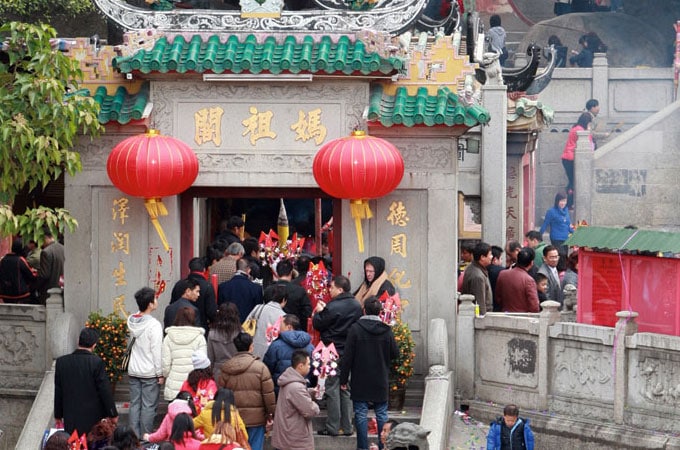
The A-Ma Temple is one of Macau’s most iconic and beautiful attractions. Built in 1488, this ancient temple is dedicated to the goddess A-Ma, who is believed to protect fishermen and sailors. As you explore the temple grounds, you’ll be captivated by its stunning architecture, intricate carvings, and serene atmosphere.
The temple is divided into six main sections, each representing a different aspect of A-Ma’s life and legend. From the Gate Pavilion to the Hall of Benevolence, every corner of the temple tells a story and offers a glimpse into Macau’s rich cultural heritage.
One of the highlights of the A-Ma Temple is the Prayer Pavilion, where visitors can light incense and offer prayers for good fortune and blessings. The scent of incense fills the air, creating a peaceful and spiritual ambiance.
Don’t forget to visit the beautiful Lotus Pond, located within the temple grounds. This tranquil oasis is adorned with lotus flowers and provides a serene escape from the bustling city.
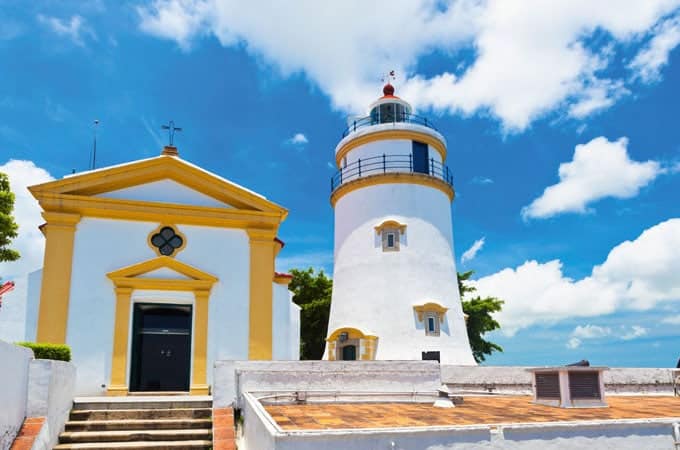
Located at the base of Guia hill is the lovely, European-style Flora Garden, once the grounds of the Flora Palace but now housing a small zoo and aviary. From here you can take the cable car to Guia Hill, Macau’s highest point offering the city’s best views, to see the whitewashed Guia Fortress, constructed in the early 17th century and Guia lighthouse, the oldest of its kind on the Chinese coast. There’s also a lovely old chapel with recently discovered frescoes adorning its walls, representing both Chinese and European religious motifs.
This is just a small taste of what Macau offers sightseers but honestly, you could spend many days visiting all the wonderful museums and historical sites here so make sure you leave enough time to discover its charms!
